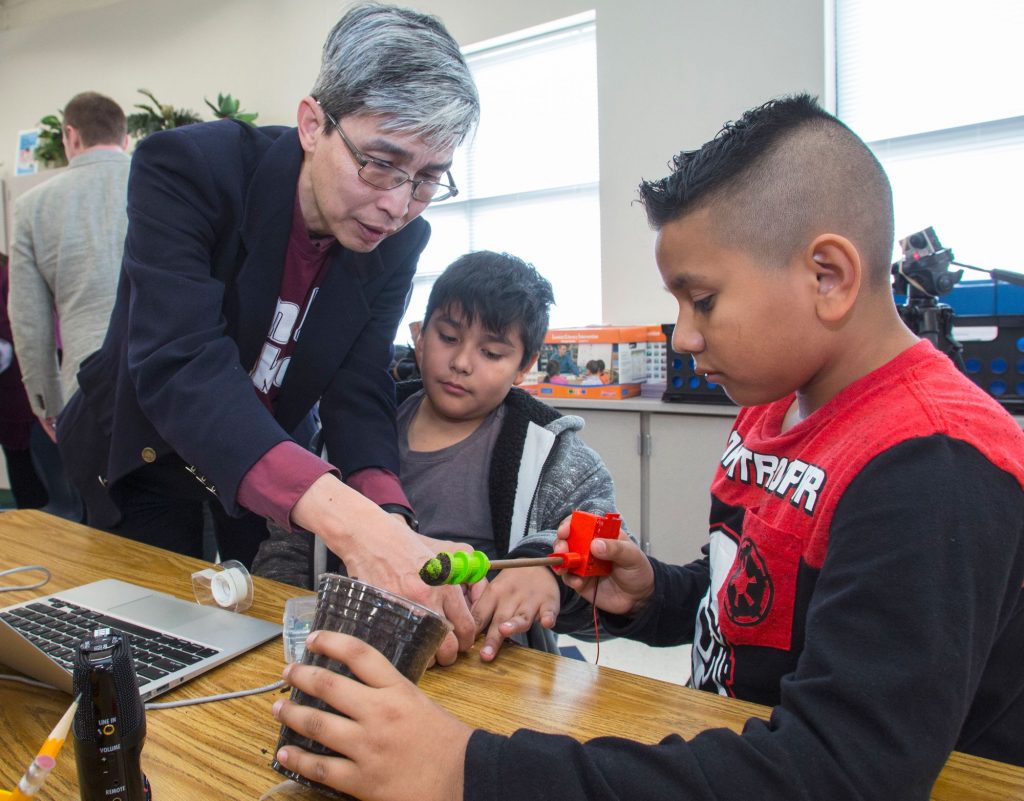STEM concepts: Looking for best methods for teaching K-12 students

K-12 educators have traditionally taught a curriculum of knowledge and basic skills such as reading, writing and arithmetic, to equip their students for their future livelihood.
But times have changed.
“Educators in 2020 also need to prepare students to work in an age where technical innovation will likely bring several waves of dramatic changes within the lifetime of an elementary school student,” said Francis Quek, founding director of the Institute for Technology-Infused Learning, an interdisciplinary College of Architecture research unit whose faculty and student scholars are learning the best approaches to teach K-12 students in a tech-centered world.
“Reading, writing, and arithmetic education have to be paired with computer technology and science and perhaps most importantly, creativity, because our species is dependent on creativity to survive,” said Quek, professor of visualization. “We are the only species that, when faced with something like the coronavirus, strives to create something like a vaccine. We are the creative species.”
These new teaching challenges raise a number of questions for educators: chief among them is, “what educational approaches work best?”
To address this question, Quek and a cadre of TITIL researchers are engaged in five projects with $2.3 million in funding, most of it from the National Science Foundation. In these projects, which are taking place in Bryan Independent School District and several rural Texas schools, they’re introducing science, technology, engineering and mathematics (STEM) concepts to minority or rural students who are traditionally underrepresented in these fields. At the same time, TITIL researchers are discovering how educators can best teach these concepts.
“Going forward, everyone in the workplace is going to need at least a basic level of technical competence,” said Quek. “No matter one’s role in the workplace, from entry level employees to heads of multinational corporations, everyone will need to understand how to engage with technology.”
In one TITIL project, Quek has teamed with Aggie faculty and students in the departments of psychology and teaching, learning and culture, and teachers at Bryan’s Neal Elementary School to introduce third-, fourth- and fifth-graders to STEM concepts and activities.
“We’re evaluating various approaches through which young students may think of themselves as being interested in and capable of doing science,” he said.
“Such identity development may have a greater impact over time than learning any one piece of science in elementary school. If the children think of themselves as capable of and interested in science and technology, they may persist in learning STEM subjects as they continue in school,” said Quek.
Engaging in imaginative, technology-related activities may also connect participating students to the larger STEM community, “creating a sense of belonging in that community, and helping prepare them to more easily assimilate in a rapidly changing technological world,” he said.
In one of several public demonstrations of their work, Neal students created plastic cup robots that walk on Popsicle sticks, earthquake simulations and other projects including light projectors, chemical mixers, small heaters and more — all created with basic arts-and-crafts and electronics material and powered by simple household batteries.
They presented their projects to audiences at their school, at Texas A&M — and on a big stage half a continent away in New York City.

